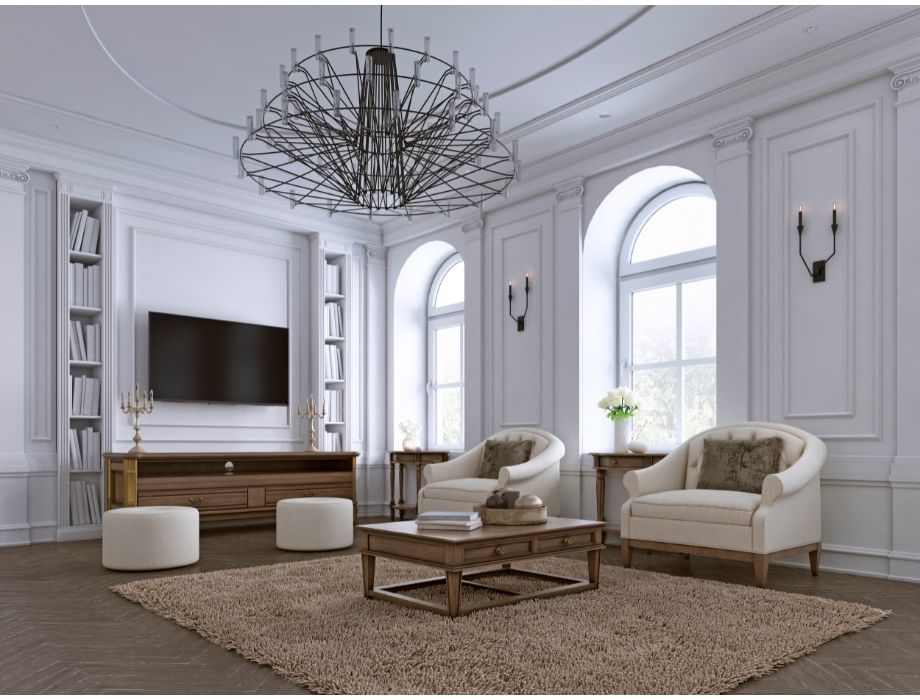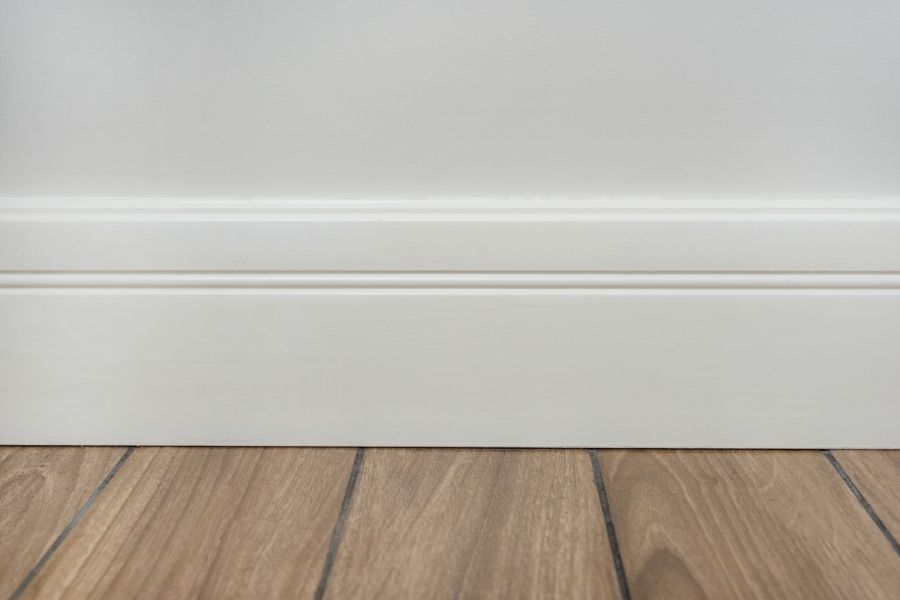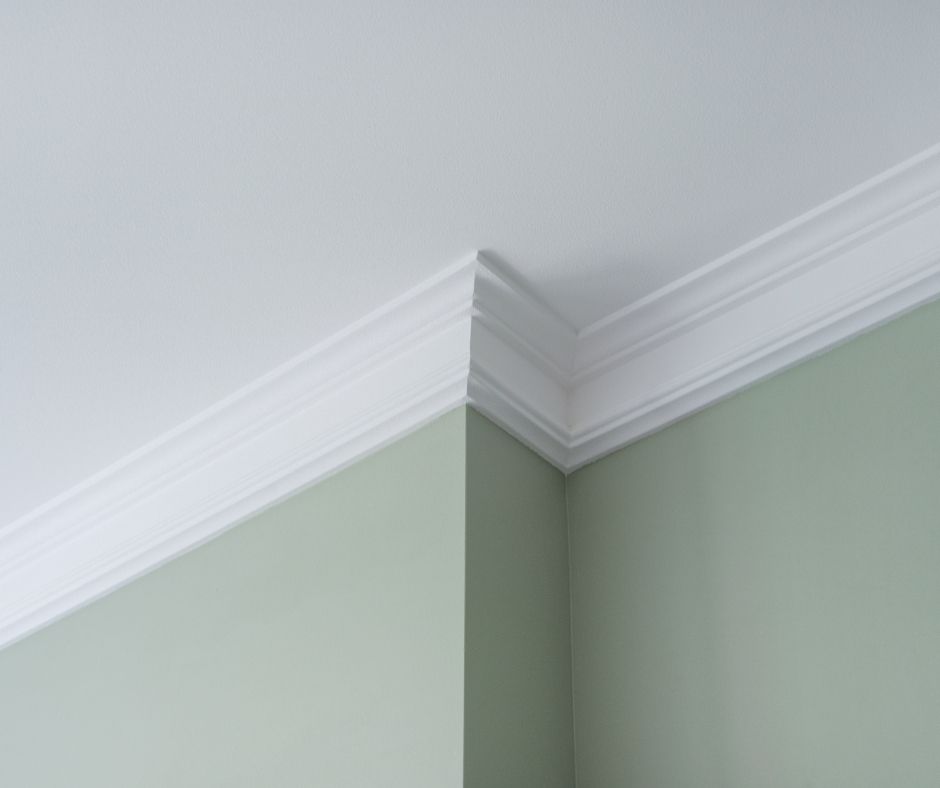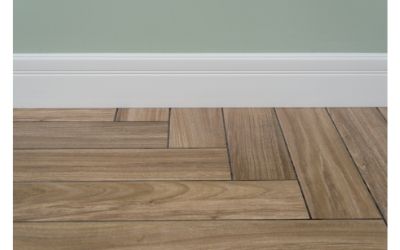
The question; “can crown molding be used as baseboard?” is often asked people like the idea of being able to utilise the molding they have on either the ceiling (the crown) or the floor. This makes sense as if you have left over crown molding, you’d may want to re-purpose it than throw it in the bin.
It’s well known that using wall trims such as crown molding and baseboards to finish house interiors dates back as far as house construction. Over the years, crown molding has been used to conceal minor construction imperfections such as cracks and blemishes. It has also endured through the centuries as a smooth and elegant way to transition from the ceiling to the walls.
Related Post: What is the Best Cordless Finish Nailer?
Due to the striking appearance that ceiling molding presents, some homeowners wonder whether it’s advisable to use it as baseboards. This post debunks this and other uncertainties regarding crown molding and baseboards.
So, Can Crown Molding be Used as Baseboard?
Unfortunately, crown molding can’t be used as baseboard. Ceiling molding is specifically designed to fit and seal off the 45-degree angle joint between the ceiling and the walls. Also, it lacks the middle support against the force of gravity, so it would easily break off when used in place of baseboards.
What is Crown Molding?
Crown (ceiling) molding is the trim that installs at the corner adjoining the ceiling and walls of a house. Historically, it was used to mask the unsightly space between walls and the ceiling. Over the years, crown molding has evolved as both a functional and decorative masterpiece.
Today, crown molding has multiple applications. It not only conceals architectural flaws but also offers a soft and graceful transition between the ceilings and walls. Moreover, you can leverage crown molding to frame your walls, photographs, and other house furnishings beautifully. Even better, ceiling molding gives a home an upscale look and increases the value of a house, making it more attractive to prospective buyers.
Related Posts: Why is Crown Molding Separating From the Ceiling?
Crown molding comes in a variety of materials including wood, polymer, mid-density fiberglass (MDF), plaster, and metal. There are also numerous design styles and profiles of ceiling molding. Each material, design, and profile comes with distinct qualities and installation requirements.
What are Baseboards?
Baseboards refer to the wall trim that runs along the space between the walls and the floor. A baseboard not only hides the ugly wall-floor joints but also provides an attractive finish to the area. Further, baseboards protect the floor from abrasive damage by vacuum cleaners, brooms, and other house maintenance tools.
Baseboards are mostly designed from wood and plastics. The plastic options are pre-painted in different colors whereas you can stain or paint wooden baseboards to complement your house décor.
Related Posts: Where Can You Buy Crown Molding?
Extra ways to Use Crown Molding
Although you can’t use crown molding as baseboards, there are numerous other ways to make a house interior look and feel more elegant using crown molding. These include using crown molding to:
- Dress up cabinets, conceal, and finish cabinet soffits (the space between a cabinet and the ceiling) elegantly
- Finish doorways and archways in magnificent styles
- Finish and frame windows
- Finish the top of a storage shelf and transform it into an eye-catching masterpiece
What is the Difference Between Crown Molding and Baseboards?

The biggest difference between crown molding and baseboards is that crown molding covers the joint between the ceiling and top of the walls whereas baseboards run along the space between the base of the walls and the floor.
Crown molding provides a smooth transition from the ceiling to the walls while baseboards offers a consistent finish and transition from the walls to the floor.
Regardless of the differences, both crown molding and baseboards create dimension in a room by framing the walls. Both can be wooden or other artificial material such as plastics.
Related Posts: When to Cope Crown Molding (instead of mitering)
Both crown molding and baseboards can be super simple or intricate in design depending on the style of your house, your budget, and personal tastes. Either way, these both trims offer a graceful finishing touch to a house.
What Can I Use Instead of Baseboards?
Nowadays, most houses have baseboard fixtures to hide the unsightly connective space and add depth between the walls and the floor. While they’re popular and effective, baseboards aren’t the only way to conceal this ugly space and break up wall space with clean and concise edges.
If you choose to forego using baseboards, ensure the space between the walls and floor looks neat. Also, note that wooden floors respond to changes in temperature and humidity by expanding and shrinking. This can increase the space between the walls and floor, and installing baseboards covers this unsightly gap.
Related Posts: When to Paint Crown Molding
Before you forego using baseboards, remember the space between the walls and floor is a tricky spot where vacuum cleaners can ram and feet can scuff. If you still choose to sacrifice the handy baseboards, here are a few creative alternatives:
-
Wood Quarter Rounds
These are ¾” long rounded wooden strips that take the place of baseboards. They’re some of the most cost-effective alternative to baseboards. Though not necessary, some homeowners install wood quarter rounds along with the baseboards.
Besides being affordable in both purchasing and labor costs, wood quarter rounds are customizable and stainable. So, you can tweak them to your liking in case you can’t find options that match your walls and floor. Even better, they’re easy to install.
Related Post: What is the Purpose of Crown Molding?
Though readily available, wood quarter rounds are more susceptible to damage than baseboards. Also, you won’t find them as striking in appearance as wooden baseboards.
-
Reglet trim
Reglet trim is a fascinating and popular modern alternative to baseboards. It forms the illusion of a raised wall with the cast shadow hiding the edge between the walls and floor. Reglet trim consists of a piece of metal or plastic jutting from the space between walls and floor, creating an inverted L-shape.
Reglet trim best installs before installing the drywall. It adds depth and character to a room and gives your interior space a clean and contemporary appearance. However, you’ll still risk scuffs and damage because you can still bump and dirty the base of the walls.
You can paint the base of the walls in a dark color or use recessed lighting to create a more prominent shadow under reglet trim. In turn, this masks any flaws better. The recessed lighting also accents and highlights the reglet trim, making it more noticeable.
The greatest disadvantage of reglet trim is its costly and complex installation.
-
Rubber Base Molding
If you’re looking for a more modern-looking alternative to baseboards, rubber base molding is worth considering. It not only seals off the space between walls and the floor but also adds some dimension to your house interior just like regular baseboards. What’s more, rubber base molding stands up to the abuse of furniture bumps and foot traffic better than wooden baseboards.
One of the best winning points of rubber base molding is the near-limitless choice of color finishes you get. Some varieties even mimic real natural wood while others offer a more rustic metallic finish.
Related Post: Does Crown Molding Add Value to Your House?
Rubber base molding is also more affordable than your traditional wooden baseboards. However, it doesn’t quite look as tasteful as natural wood baseboards and can sometimes be hard to match to your walls and floor.
-
Porcelain Tile
Porcelain tile baseboards are suited to rooms that already have tile flooring such as kitchens and bathrooms. In such cases, all you need is to find tiles that match the color or style of your floor for a consistent finish.
Unlike wooden baseboards, porcelain tiles are waterproof and extremely easy to clean. The latter also offers an elegant transition from the walls to the floor while still adding character to your room. Even better, you need not fret over touching up porcelain tiles with paint or lacquer.
Related Post: How Much is Crown Molding?
On the down side, tiled baseboards are more costly to purchase and install than traditional wood baseboards. They’re also more susceptible to damage by heavy foot traffic and furniture bumps than wood baseboards.
-
Wallpaper
Wallpapers allow you to finish a room’s interior in style without using crown molding or baseboards. They not only conceal imperfections at the wall-floor joint but also come in various patterns and textures for a custom elegant finish.
This is a cost-effective alternative to baseboards as you can upgrade or change the wallpapers frequently without breaking a bank. It’s also a lot easier to put up wallpapers than baseboards.
-
Shiplap walls
Installing shiplap walls is a fashionable way to finish many house interiors, especially those with modern and country style designs. It offers homeowners diverse ways to finish or paint the interior.
Shiplap walls don’t need baseboards because the wood sinks down to the floor. And since they rest atop the wall, they shield the base of the wall in the same fashion that traditional baseboards do. Shiplap walls are striking in appearance and are a design standout particularly in high-traffic rooms such as dining rooms and living rooms.
-
Peel-and-Stick Decals
This is a really cost-effective alternative to baseboards in purchase, installation, and maintenance. The decals consist of peel-and-stick strips that replicate baseboards but don’t add depth to a room.
Related Post: What is the Best Crown Molding Jig?
When applied correctly, peel-and-stick decals can look authentic just as wooden baseboards. They also protect the wall-floor joint from scuffs and undue damage by foot traffic. However, you lose most of their protective cover along with their beauty when the weather and seasons change.
-
Vinyl Wall Base
Vinyl wall baseboards replicate real wood baseboards just as rubber base molding does. Like the latter, they offer a wide array of finish options and are cheaper to buy and install than wood. However, you’ll find them more limiting in customization than wood baseboards as they’re mostly plain. Still, it’s easy to find a fitting option for your house.
-
Reclaimed Wood Molding
Reclaimed wood molding presents you with diverse ways to finish the wall-floor trim. It can complement your wooden floor and walls or contrast them with a rustic appearance. Either way, it’s formed from recycled wood, so it’s environmentally friendly.
Reclaimed wood molding is cheaper to buy and easier to install than natural wood baseboards. It also allows you to tweak the installation with various styles for a custom stylish wall-floor trim finish. Nevertheless, reclaimed wood molding wears faster than true wood baseboards in similar conditions.
Can You Put Crown Molding on the Floor?

It isn’t practical to put crown molding on the floor as it’s specially designed for installation on the ceiling-wall border.
Installing crown molding is an easy and effective way to add elegance to a room. It’s also an affordable strategy to upgrade the interior décor and add value to a house without making major structural modifications.
Related Posts: How to Measure Crown Molding
The secret to installing crown molding successfully is putting it up at the right place. Most homeowners install crown molding at the junction between the ceiling and walls. You can get a more sophisticated and upscale house interior by putting up crown molding on other trims including:
- Around Shelves
- On cabinets
- Around bathroom mirrors
- Bedroom headboard
- Around a mounted television set
- On a mantel piece
Do You Really Need Baseboards?
Baseboards make a room look and feel more elegant and cozy. However, their functionality is not limited to enhancing the visual appeal of your house interior. Other functions of baseboards include:
- Shielding your drywall against physical damage from bumps by furniture and other objects such as vacuum cleaners, mops, and brooms
- Sealing the drywall against water seepage and damage
- Disguising crooked walls such that they appear elegant
- Concealing unsightly gaps between the walls and wooden floors occasioned by varying temperature and moisture levels
- Creating a true right-angle stop for dirt and debris so they don’t get into areas that are hard to access.
Related Posts: Can Crown Molding be Installed on a Vaulted Ceiling?
Final thoughts
Installing trim finish is an effective way to enhance the beauty and add value to a house. It converts a plain house interior to an elegant home that’s more inviting to visitors and prospective buyers. Although you can’t use crown molding as baseboards, there are numerous other house trims where you can install it for a more upscale appearance.
